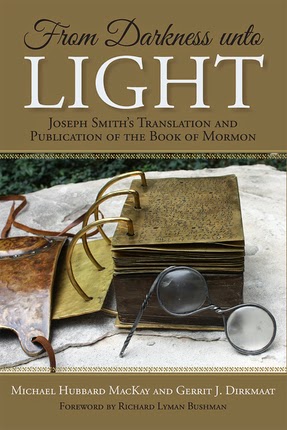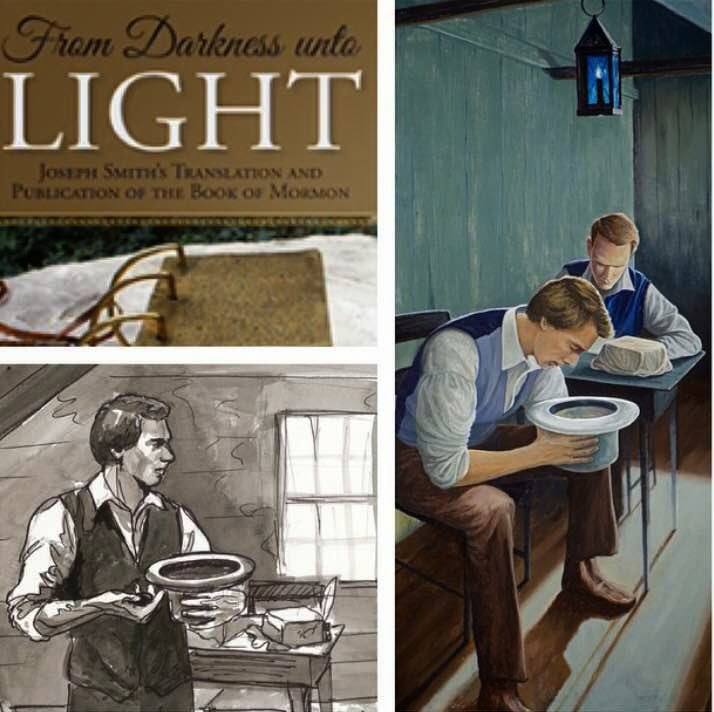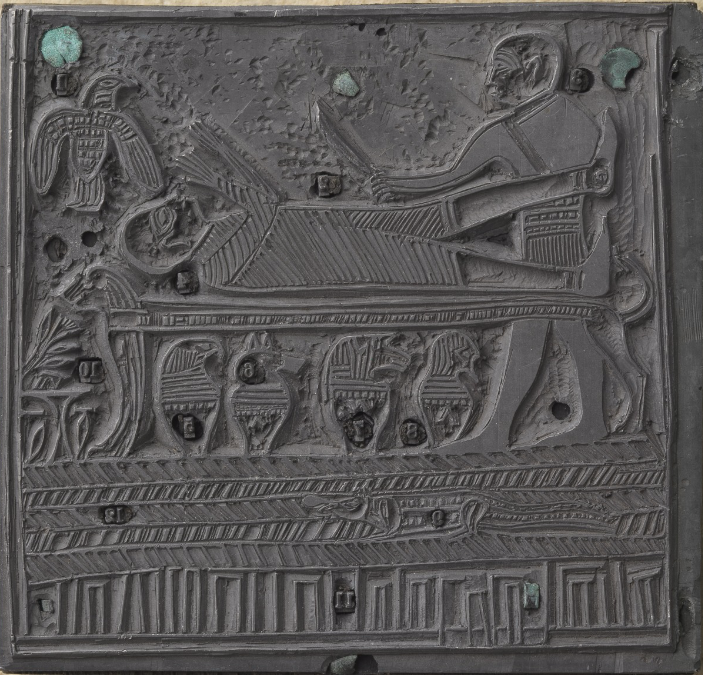
A number of writers from both naturalistic and faithful backgrounds (Fawn Brodie and Terryl Givens serve as two immediate examples that represent the competing paradigms) have asked what, if any, environmental factors (e.g. contemporary writers, movements, intellectual currents, etc.) influenced the Prophet’s theology. Methodism, Campbellism, Freemasonry, Republicanism, Swedenborgianism, Romanticism, American lore about Indian origins, folk magic, and other intellectual and theological systems have all been invoked as either directly or circumstantially influencing Joseph Smith’s theology. In Schooling the Prophet: How the Book of Mormon Influenced Joseph Smith and the Early Restoration, a new book published by the Neal A. Maxwell Institute for Religious Scholarship, author Gerald E. Smith tackles this question by investigating what has, somewhat surprisingly and counterintuitively, been generally overlooked by historians as an influence on Joseph’s theology: the Book of Mormon.
Smith begins his treatment with a (semi-rhetorical) question that he sets out to answer in the course of six chapters (some two hundred pages of text): “Could it be that the Book of Mormon had a formative influence on Joseph Smith and the founders of the Mormon restoration?” (11) The evidence Smith provides for his answer to this question (a resounding yes: “It is my thesis that the Book of Mormon had a profound formative influence on Joseph Smith’s doctrinal and institutional development during the nascent days of the nineteenth-century Mormon restoration” [3]) is convincing. “[The practices of the restoration] evolved over time, of course, but in the beginning, in the early restoration, we must see Smith quietly looking to one of the most important sources of religious thought and sacred protocol that he knew: the Book of Mormon” (11). This can be seen, as Smith explores, in the following ways: the formation of the Church and the early revelations received in 1828–1830 (13–44), the influence of the Book of Mormon on such doctrinal subjects as soteriology, Christology, and the Fall (45–86), Mormon sacraments such as baptism and the eucharist (87–128), Latter-day Saint temple theology (129–164), priesthood and ecclesiology (165–206), and the role of the Book of Mormon in shaping a unique early Mormon religious identity (207–218). In his discussion of these categories Smith ably demonstrates the important and central role the Book of Mormon played in fashioning the doctrines of the Restoration.
Smith is quick to anticipate critics of his thesis who insist that, being a product of Joseph Smith’s lucid imagination, of course the Book of Mormon would influence early Mormonism. “The very question of the Book of Mormon’s influence on the Prophet calls for an explanation since one might fittingly dismiss that influence simply because it was derived from Smith himself,” our author notes. “Yet such an assumption is a heuristic one and prematurely precludes further exploration of the Book of Mormon as an original source document” (2). Indeed, Smith’s thesis is strengthened and enriched when one operates within a paradigm of the Book of Mormon being an ancient text, as Smith himself explains. “Rituals, theologies, and doctrines of the early restoration seem to stem directly from Book of Mormon worship forms,” Smith writes, “which in turn seem to have clear correlations with ancient Old Testament rites, rituals, forms, and meanings. The problem of a nineteenth-century explanation of the Book of Mormon text in which Smith wrote the Book of Mormon as his own repository of religious ideas, innovations, and writings . . . is that it ignores the work’s historic origins. . . . Provenance is evidence of historic origin, authenticity, and timeless value in a work” (211–212). This is a keen insight that shouldn’t be missed by either readers of Smith’s treatment or the Book of Mormon itself. The Book of Mormon’s historicity does indeed significantly influence the “timeless value” of the text as a religious work, a point I myself have argued elsewhere. Those (even those who accept the book’s historicity) who insist on reading the Book of Mormon strictly as a modern American religious or literary work are at risk of missing the robust convergences the Nephite record has with ancient Israelite religion and culture. This may in turn blind such a reader to the continuity between ancient biblical practices and modern Mormonism; a continuity that was preserved and perpetuated by the Book of Mormon’s influence on Joseph Smith’s restoration project.
Another valuable insight comes from Smith’s analysis of the Book of Mormon’s influence on the Prophet’s temple theology. No sensible historian of Mormonism denies evolution over the course of Joseph Smith’s prophetic ministry. Doctrinal and ecclesiological development in early Mormonism is clearly discerned from even a cursory glance at Mormon history. That being said, Smith pushes back against historians who insist on a sort of radical departure from early Mormonism during the Nauvoo period of Joseph Smith’s life (1839–1844). The common assumption among historians, Smith explains, is “that Nauvoo doctrines and theologies were distinctly later-period revelations to the Prophet emerging spontaneously in the Nauvoo era.” Although “widely held among both Mormons and non-Mormons,” Smith insists this view is “incorrect” (72–73). Smith argues that the seeds of Joseph’s Nauvoo temple endowment (with its attending doctrines of theosis and ascending into the presence of God, or what Smith calls the “Eden ascension narrative” [78]) are found within the pages of the Book of Mormon (as well as the opening chapters of the Book of Moses, revealed to Joseph Smith in 1830). Smith not only argues for the Eden ascension narrative being located in the pages of the printed Book of Mormon, but also draws on the intriguing work of Don Bradley to suggest that the now lost Book of Lehi contained temple imagery and other overtures to Joseph’s later Nauvoo theology. Although Smith does not deny evolution in Joseph’s teachings, he critiques the common notion of a radical departure from Book of Mormon theology in Nauvoo. “Rather than persisting with the prevailing notion that the fall of Adam was the origin of evil and death,” Smith clarifies, “the Book of Mormon reframed Adam as a divine son of God, showing the faithful the ascension path to return to the presence of God through symbols, rituals, and narratives that appeared similar to the earliest Wisdom traditions enshrined anciently in the Israelite temple. In this the Book of Mormon completely bypassed traditional nineteenth-century theologies, pointing Joseph Smith toward a different path to doctrinal development that ultimately was enshrined in the theology of the Mormon temple” (86).
In addition to his convincingly argued thesis, Smith is to be commended for his use of original sources drawn from the Joseph Smith Papers Project, his engagement with important secondary literature on the Book of Mormon (including the work of Hugh Nibley and the Interpreter Foundation), and the readability of his prose. Illustrations and pictures of Mormon personalities and sites compliment the text, and although I would have personally preferred footnotes, endnotes are employed judiciously and do not overwhelm the reader.
For these and other reasons I highly recommend Smith’s Schooling the Prophet. It is an important contribution to Latter-day Saint scholarship on the Book of Mormon that deserves careful attention by laymen and academics alike who share a common interest in the history and doctrines of the early Restoration.





.jpg)








